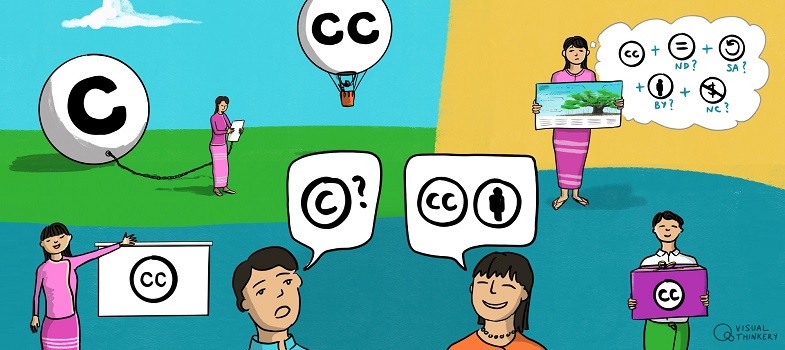Attribution basics
When you are looking for OER, you need to check you have all the information you need to attribute a resource properly. This is where your asset log may be useful!
You might remember from earlier in the course that we are legally required to attribute all CC-licensed resources. This is because all CC licences include the ‘BY’ element. You may also recall from Unit 2 that public domain and material marked with the CC0 tool do not require attribution. However, it is often considered good practice to provide a reference for this type of resource, because it helps other users to find the original resource.
The best practice for attribution is to include the following pieces of information in an attribution.
- T = Title
- A = Author
- S = Source
- L = Licence
This is described as the ‘TASL’ approach. If an author has provided extensive information in their attribution notice, retain it where possible.
Look back through the course and in the Acknowledgements section to see how images and other materials used in this course have been attributed.
The attribution requirements in the CC licences are purposefully designed to be fairly flexible to account for the many ways that content is used. A filmmaker will have different options for giving credit than a scientist publishing an academic paper. Explore this page about best practices for attribution on the CC wiki. Among the options listed, think about how you would prefer to be attributed for your own work.
Creative Commons is also exploring ways to automate attribution. Take a look at this page of results from the CC search tool. Click on a couple of different photos to see how attribution is given, and experiment with the ‘copy credit as text’ and ‘copy credit as HTML’ functions. Open Attribute also provide a tool to enable easy CC attribution. There is a Creative Commons Microsoft Office Add-in for adding attributions to Word, Excel and Powerpoint.
The other main consideration when copying works (as opposed to remixing, which will be covered in Unit 5) is the NC or non-commercial restriction. If the work you are using is published with one of the three CC licences that includes the NC element, then you need to ensure that you are not using it for a commercial purpose.
Remember, you can contact the creator if you want to request extra permission beyond what the licence allows.
Introduction
